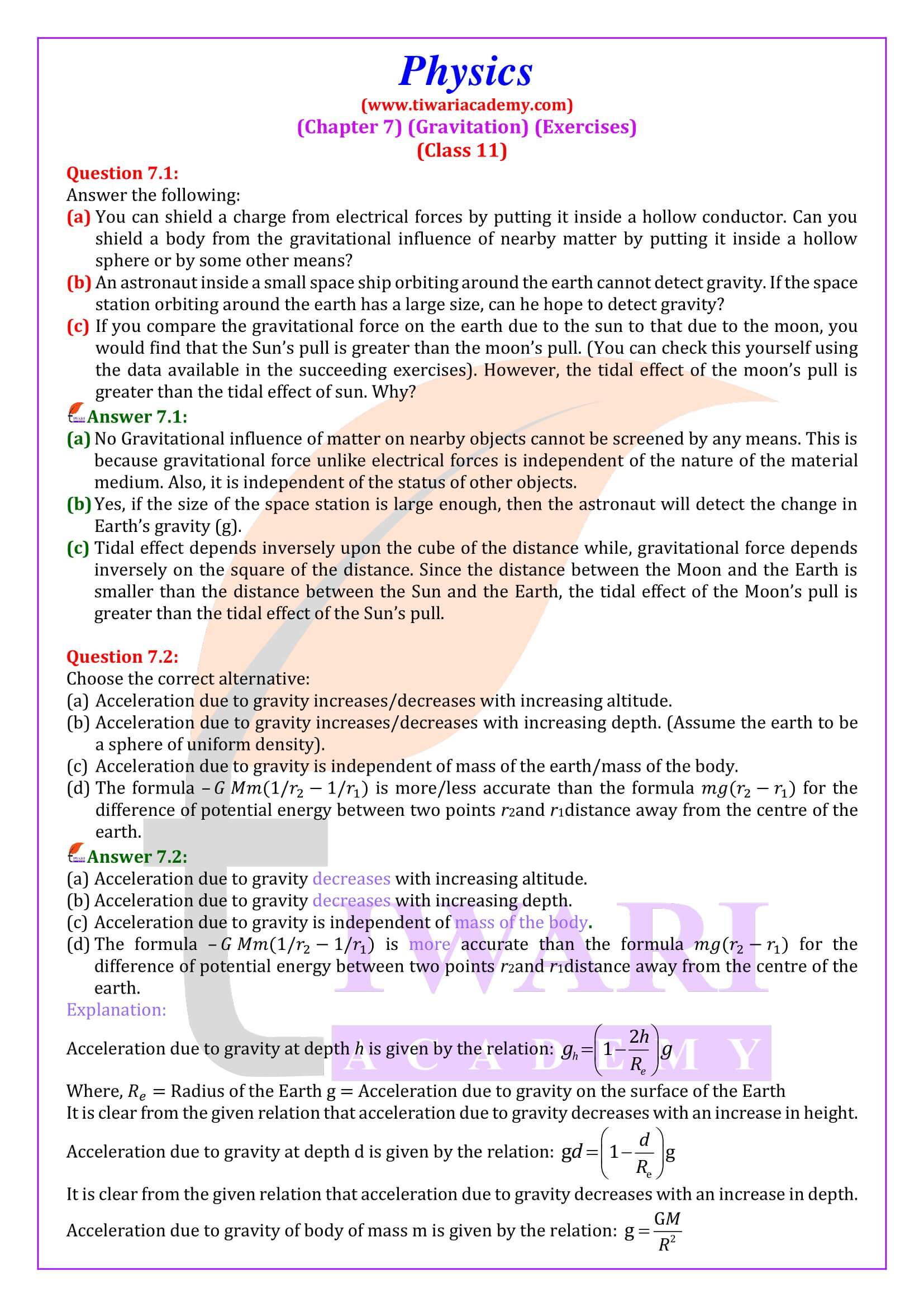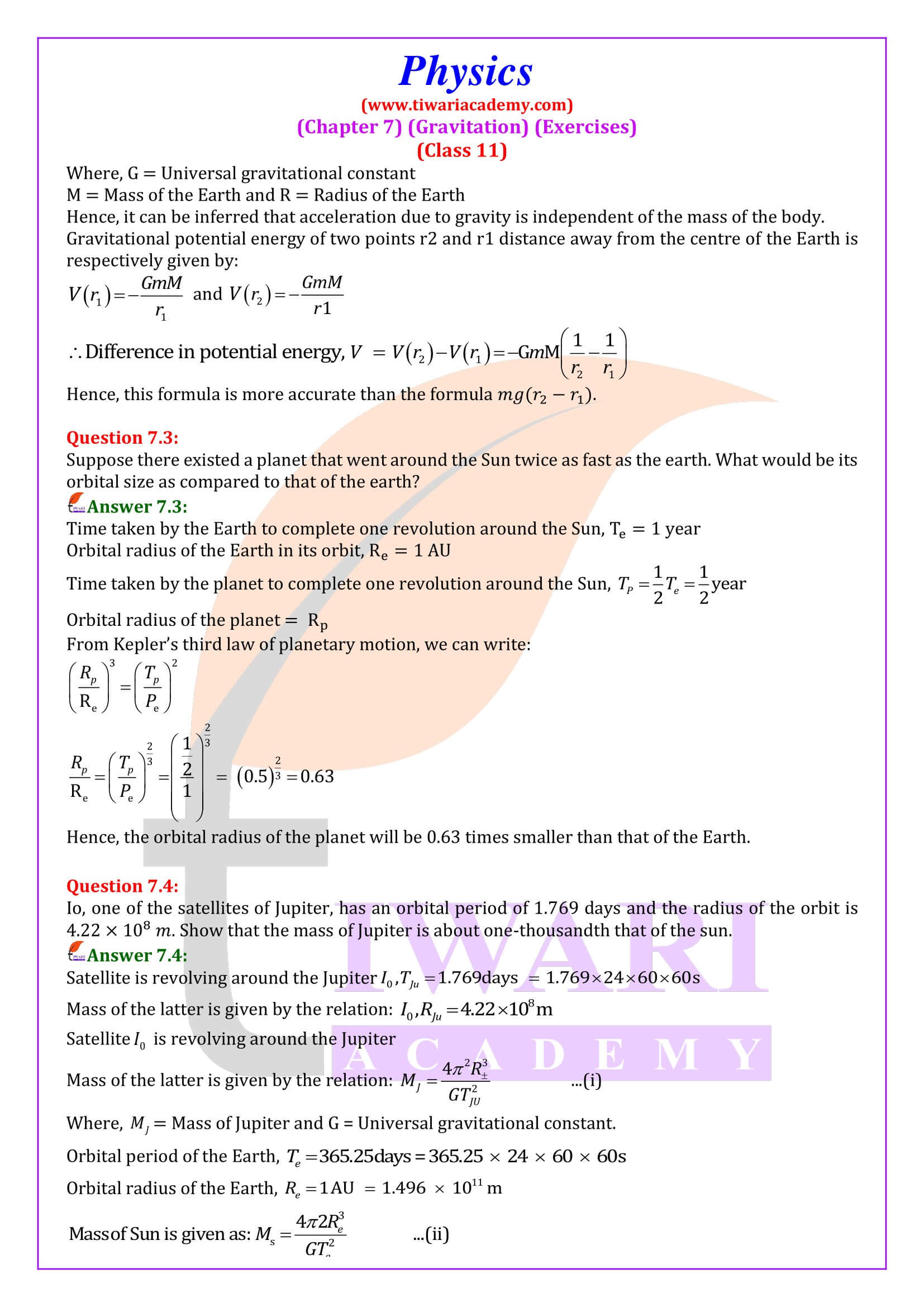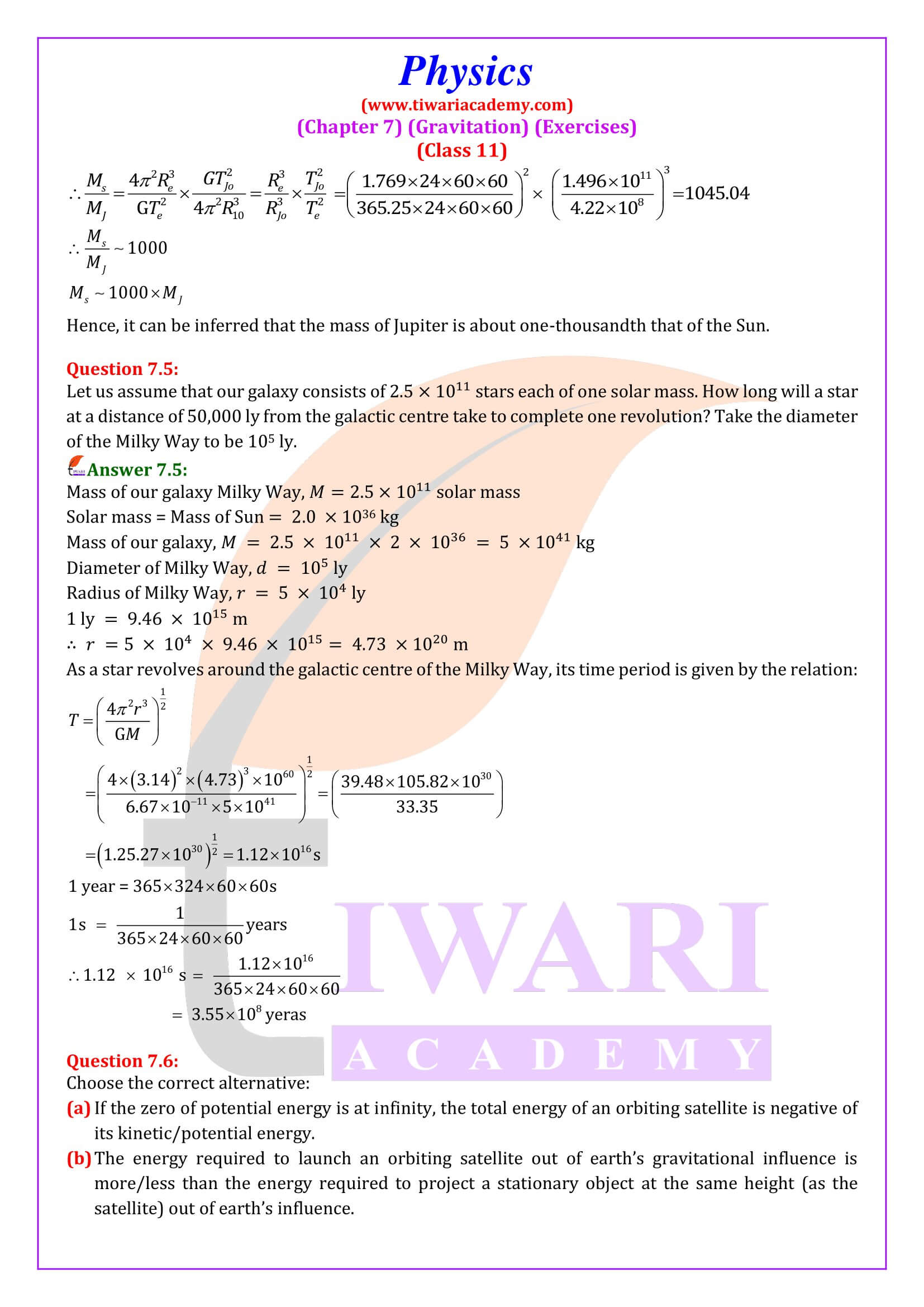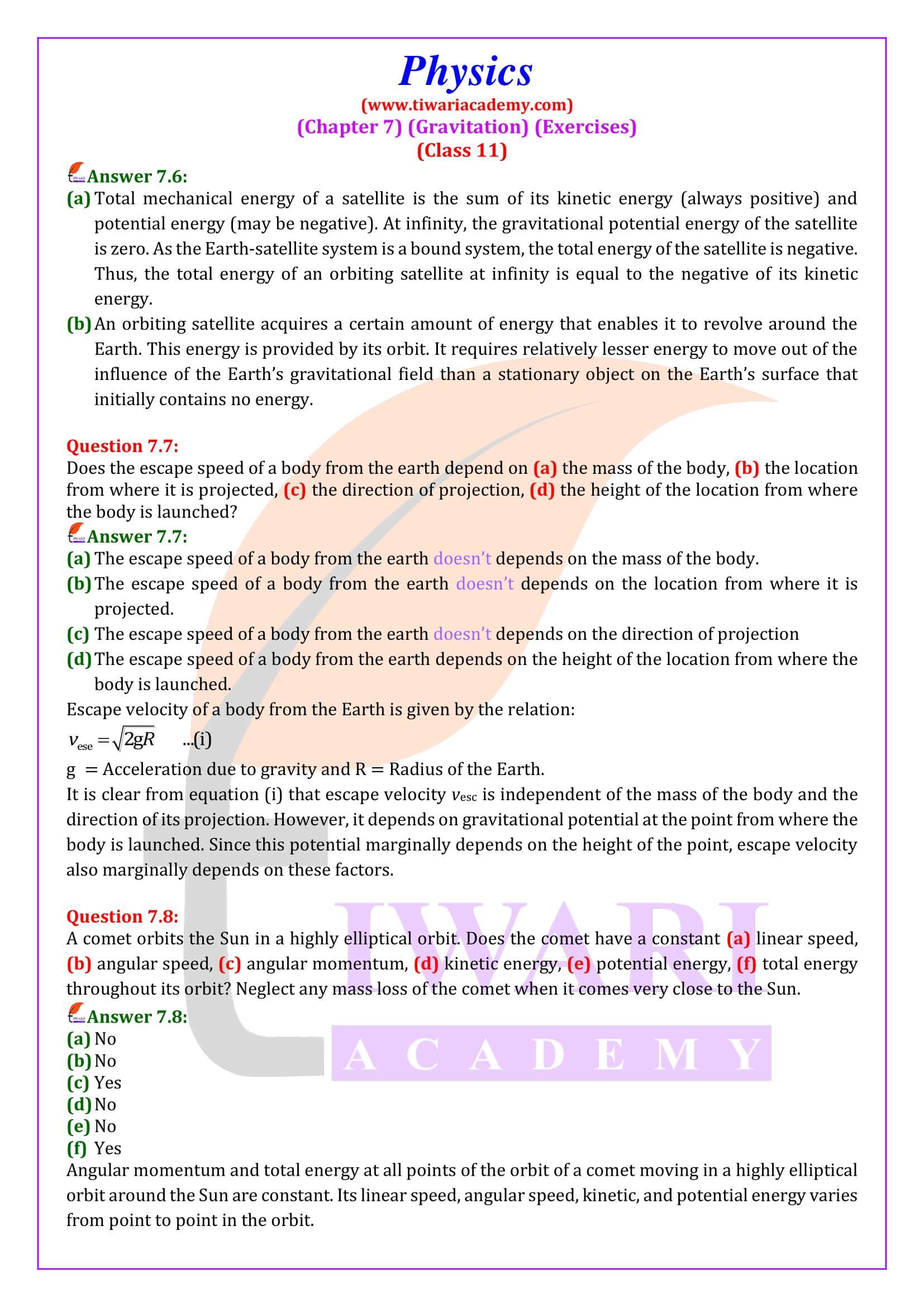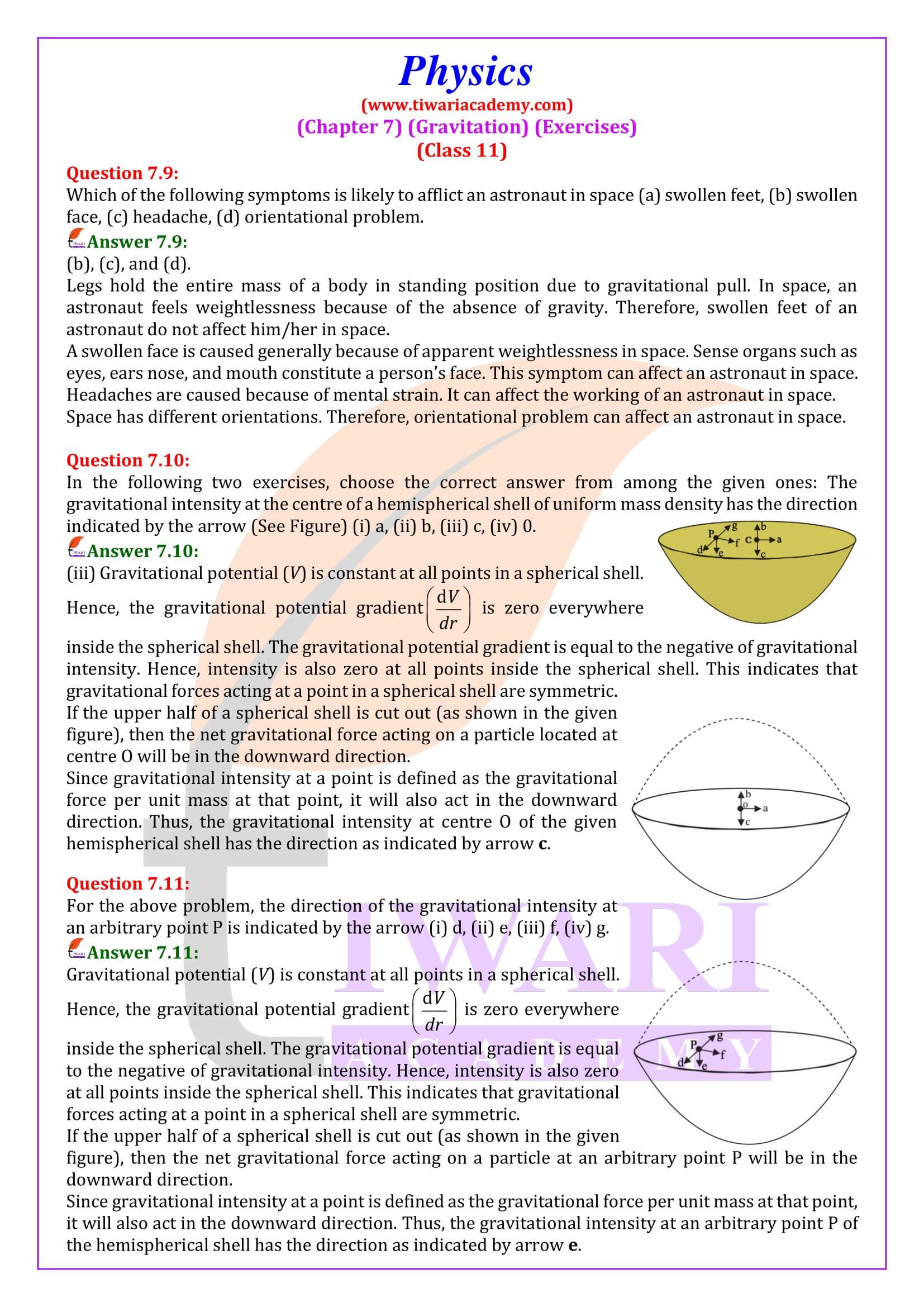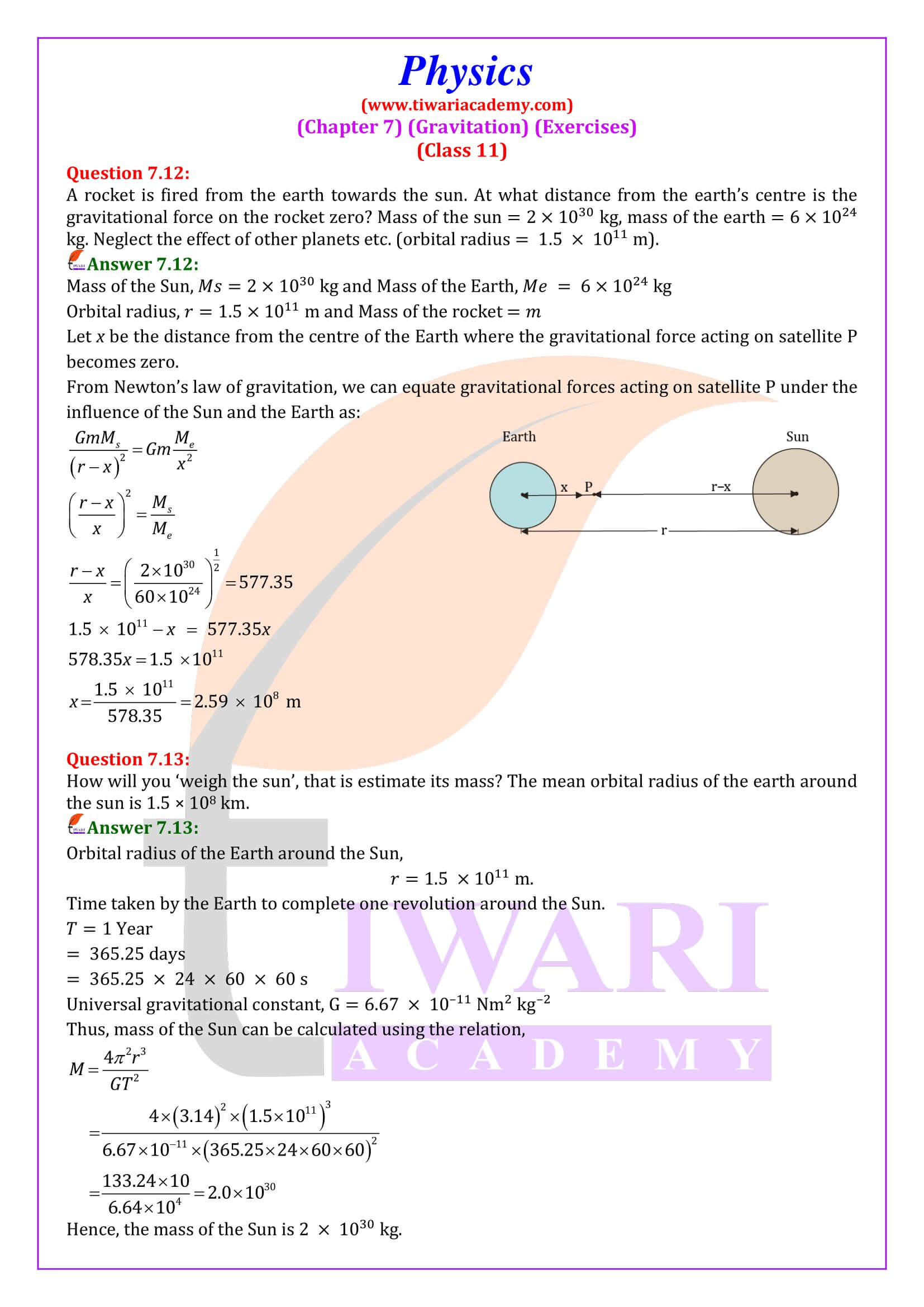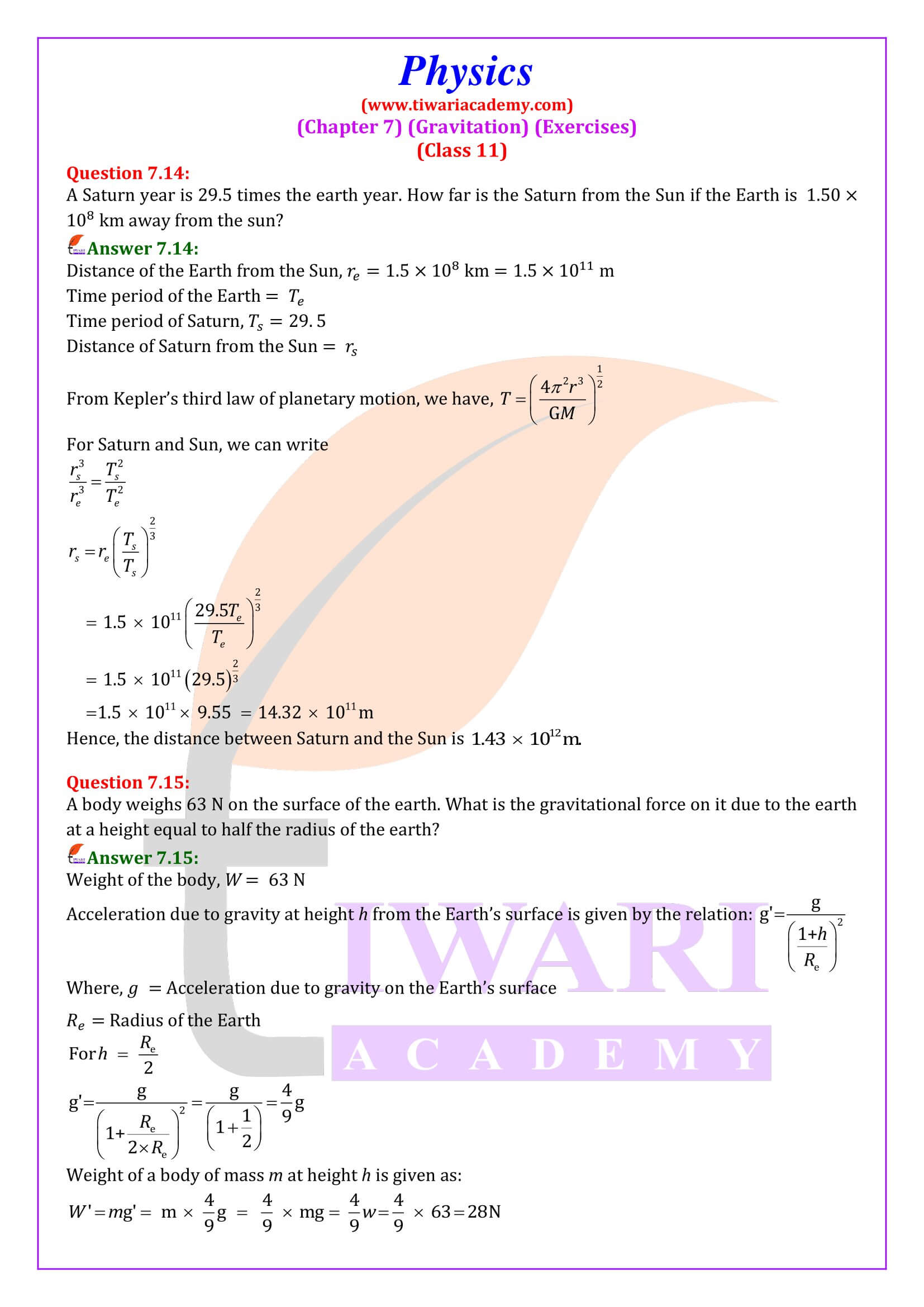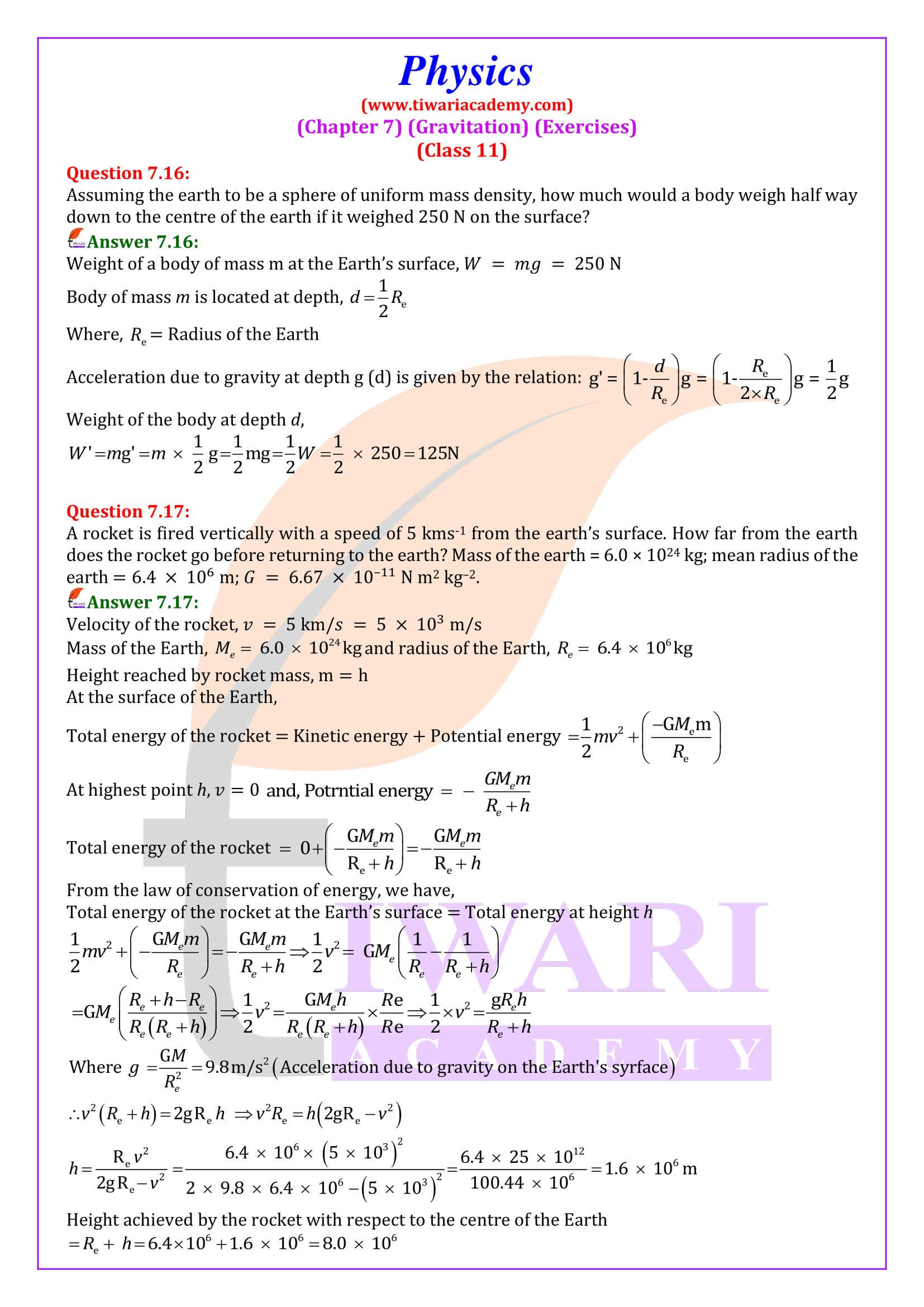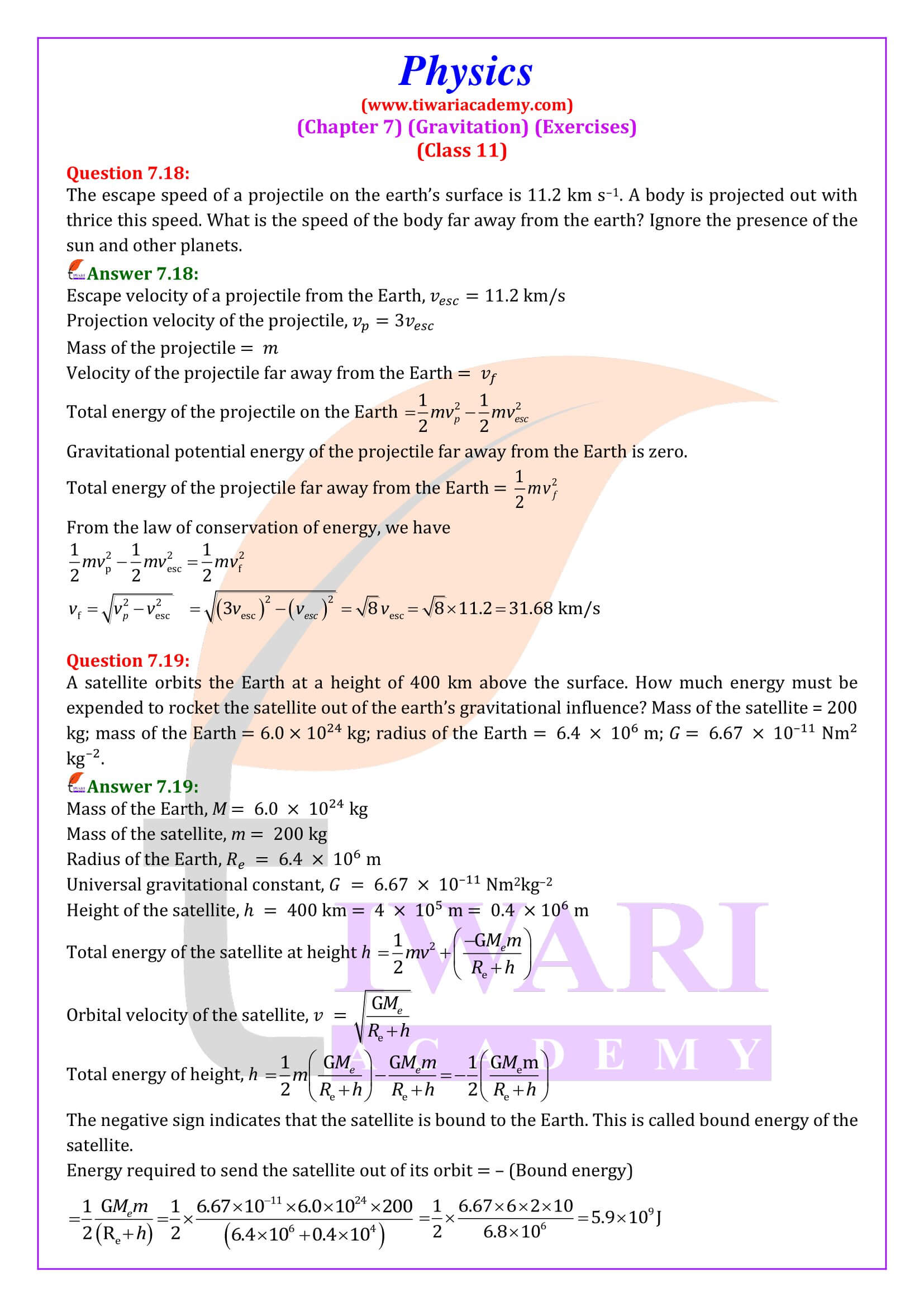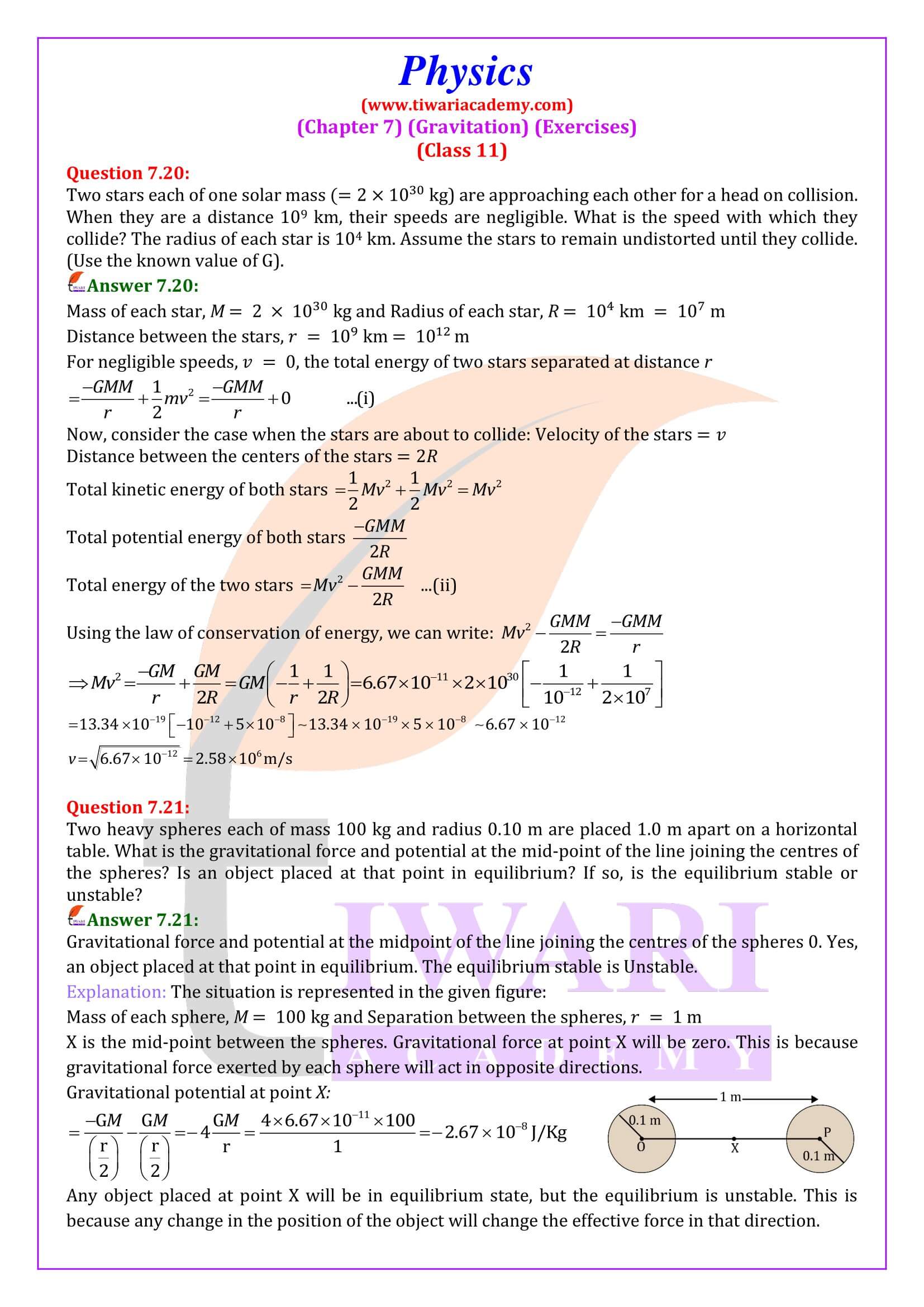NCERT Solutions for Class 11 Physics Chapter 7 Gravitation in Hindi and English Medium with additional exercises updated and modified for session 2025-26. Get here 11th Physics chapter 7 question answers, MCQ and Important questions. As you study, create concise summary notes for each important topic. Summarize key concepts, equations, and important points. These notes will serve as a quick reference during revision.
Class 11 Physics Chapter 7 Gravitation Question Answers
Class 11 Physics Chapter 7 MCQ
A satellite S is move in an elliptical orbit around the earth. The mass of the satellite is very small compared to the mass of the earth.
Who among the following first gave the experimental velocity of G?
A body is projected vertically from the surface of the earth of radius R with velocity equal to half of the escape velocity. The maximum height reached by the body is
If the radius of the earth were to be raised by 1% its mass remaining the same, the acceleration due to gravity on the surface of the earth will
Class 11 Physics Chapter 7 Topic – Kepler’s laws
The notion of movement is always relative. There are two types of exercises. The energy of a moving particle and Bound motion. The particle has negative total energy (E<0) in bounded motion, and there are two or more extreme points. The total energy is always equal to the potential energy of the particle, i.e. say when the eccentricity. The kinetic energy of one becomes zero, and E < 0 indicates that the motion of the object is bounded. A circular orbit has an eccentricity of zero, while an elliptical orbit has an eccentricity of 1.
Unlimited Motion
A particle in unlimited motion has a positive total energy (E > 0) and an extreme point where the total energy is always equal to the potential energy of the particle, i.e. the energy kinetics of the particle becomes zero. When the eccentricity e > 1, E > 0 means that the object moves freely. Parabolic orbits have eccentricity e = 1, while hyperbolic orbits have eccentricity e > 1. Orbital law, equal area law and periodic law are Kepler’s first, second and third laws, which are described in detail. Kepler’s first law – the orbital law:
Kepler’s first law is called the law of ellipses and states that the planet revolves around the sun in an oval. Orbital law is a general term for Kepler’s first law.
Class 11 Physics Chapter 7 Multiple Choice Questions
A missile is launched with a velocity less the escape velocity. The sum of its kinetic and potential energy is
There is no atmosphere on the moon because
A body weighs 500 N on the surface of the Earth. How much would it weight half way below the surface of the earth?
Which law described the orbits of planets around the sun?
11th Physics Chapter 7 Topic – The law of Universal Gravitation
Gravity is the force that every object on Earth or in space attracts. The gravitational force on an object depends on its mass, and the greater the mass of the object, the more force other objects exert on it. All objects that we can see attract each other to some degree, like pens, erasers, planets, cell phones, watches, refrigerators. Every object in the universe attracts other objects by a force that is proportional to the product of the masses of the two objects and inversely proportional to the square of the distance between them. This is called the law of universal gravitation.
This has a very interesting history and a lot of craftsmanship and research by many scientists in science and mathematics. As per the old saying, one day, Isaac Newton was sitting under an apple tree at his university. An apple fell to the ground, and he wondered why the apple was falling and why it was not rising. This curiosity struck him so deeply that he set out to study it and find a mathematical solution that made the apple drop. He formulated a law for this, called the law of universal gravitation.
Class 11 Physics Chapter 7 – Gravitational Potential Energy
Gravitational potential energy is described as the energy of an object created by gravity, that is, when gravity acts on an object and this force creates a type of potential energy called gravitational potential energy. Now, if the position changes due to the force, the work that the force does to the body is the change in potential energy. Suppose the position of object changes due to gravitational force, and with it the change in potential energy. The work done by gravitation is equal to the change in position of the object, so the work done by gravitation will be equal to the change in potential energy from one point to other position.
In this case, the force required to move the object from position 1 to position 2 is equal to the change in potential energy, which is equal to the potential energy at point 2 minus the potential energy at point 2. Point 1. Unit mass brings the object from infinity to that the work done by position is called gravitational potential. U is its symbol. J/Kg is the SI unit of gravitational potential. It is a potential body produced by universal gravitation. If the position changes due to the force, the change in potential energy is the work done by the force on the body.
Is the Kepler’s laws important in Chapter 7 of Class 11 Physics NCERT?
There are mainly three laws of Kepler’s in class 11 Physics NCERT chapter 7. Three are Orbital law, Regional law and Periodic law. The concepts of these three laws are important as per competitive exams point of view. The first law states that all planets orbit the sun in one orbit. The surface law confirms the fact that the line connecting the planets and the sun covers equal areas in equal time intervals. The law of cycles states that the square of the time it takes a planet to orbit the sun is related to the semi-major axis of its orbit.
What are the important points concerning in Chapter 7 of 11th Physics?
Class 11 Physics Chapter 7 is important to study in all the aspects. It is helpful to score in school exams as well as to prepare competitive exams. Some key points of chapter 7 are centered to topic gravity. It is a central and conservative force and it is known to be nature’s weakest force. The gravity works with any shape and object, regardless of size, shape or location. Newton’s third law applies to gravity. Gravity is generally independent of the medium between the particles, unlike electrostatic forces. For a deeper understanding of this chapter, students should refer to the NCERT solution. They can easily download these solutions from Tiwari Academy website. Students can also access free solutions on the Tiwari Academy app.
How to prepare well chapter 7 of Physics in class 11?
First, it is important that students read chapter 7 in 11th Physics completely. While reading, they should also mark or highlight the important definition or areas so they can easily refer to them before the exam. Prepare the notes of chapter 7 including all the important terms given in 11th Physics NCERT. Students should develop the habit of taking notes on their own, noting down all the important formulas and definitions required in the chapter. Finally, refer to the NCERT solutions and practice all the exercises along with additional exercises, so that the concepts are clear and can be solved with enough confidence.
